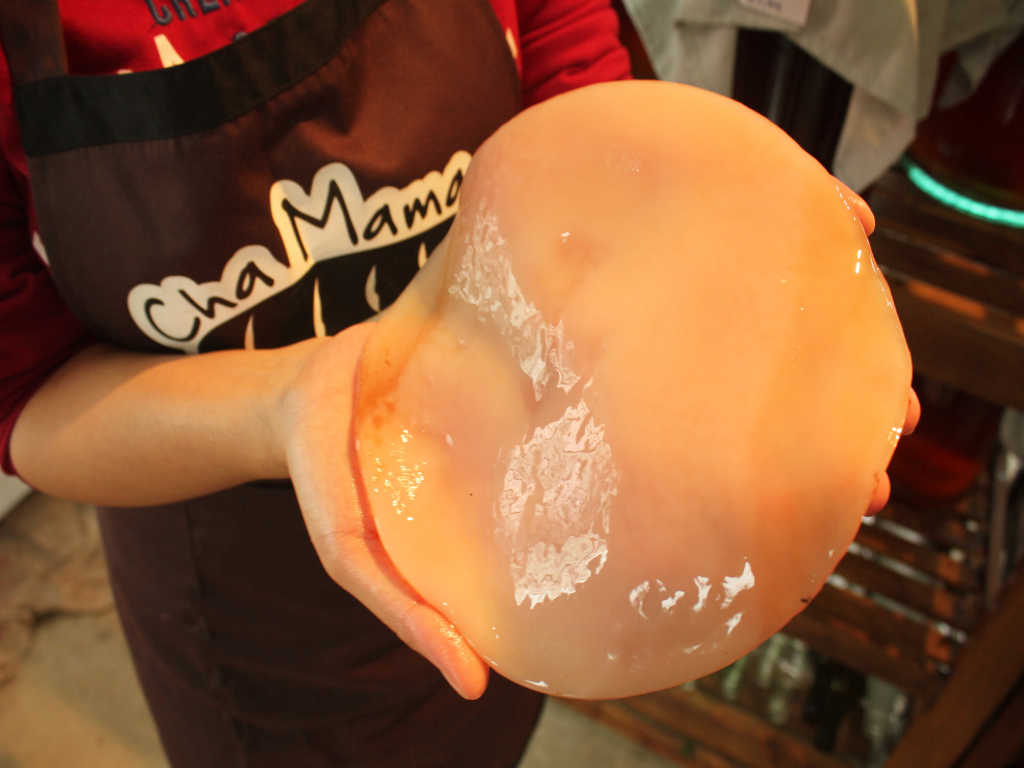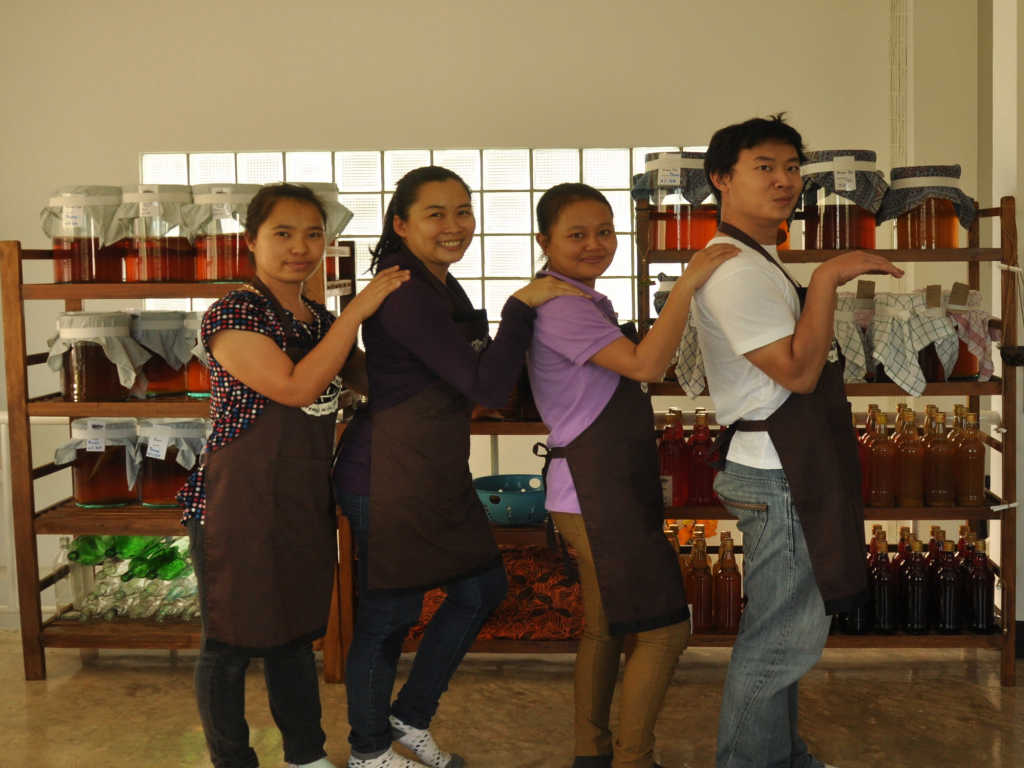By now, I think it’s safe to assume that most of you know about kombucha, the fermented tea that hipsters and health fanatics are drinking by the gallon. But what could have been merely a passing fad seems to have staying power, thanks perhaps to its ancient legacy and uniquely addictive flavour.
Although specifics are murky, kombucha’s long history traces back to China, with some saying it arrived on the scene over 2,000 years ago, reportedly known by the ancient Chinese as an “Immortal Health Elixir.”
While no mainstream scientific studies have proven kombucha’s specific health benefits, holistic nutritionists and dedicated drinkers swear by the stuff. Kombucha is widely touted for its probiotic properties, which are said to help with everything from gut health to cancer-fighting detoxification to immunity boosting.

“We continue to observe in clinical practice that the regular consumption of fermented foods [like kombucha] have a role in promoting health and healing,” says Dr. Alexis Shields, a Chiang Mai based integrative medicine practitioner. “This frequently happens in medicine, we see the benefits before we fully understand the mechanism.”
Also, once you acquire a taste for the stuff, it’s really quite delicious.
Popular in the west during the early 1990s, kombucha has made a dramatic return, thanks in part to the recent lionisation of sour foods and at-home fermenting. Now, its western resurgence seems to be seeping back east, where a love of intense flavours is already old hat.
 Chiang Mai kombucha brewers Cha Mama have taken full advantage of the trend. Run by local entrepreneur Teera Lucksanapiruk and his girlfriend Stef, Cha Mama’s growth is as organic as the kombucha they brew.
Chiang Mai kombucha brewers Cha Mama have taken full advantage of the trend. Run by local entrepreneur Teera Lucksanapiruk and his girlfriend Stef, Cha Mama’s growth is as organic as the kombucha they brew.
“About a year and a half ago, my friend Claudia and I started brewing it at home for ourselves and friends. We made some for a yoga festival in Chiang Mai and served it there, like two little girls selling lemonade,” laughs Stef. “It was a very new experience for us, but everyone liked it. They said, you need a name!”
So the brewers came up with Cha Mama – “cha” as the Thai word for tea, plus “mama” to represent the “mother” that kombucha comes from.
See, you can’t truly understand kombucha without understanding the “mother.” Otherwise known by the acronym SCOBY, which stands, appetisingly, for “symbiotic colony of bacteria and yeast,” the mother is the key to the kombucha-brewing process. It may sound (and look) gross, but this is what jumpstarts the process of fermentation, from which so many of our favourite things come.
SCOBYs may take some getting used to – they are basically living slices of gelatinous slime – but they are actually quite fascinating. At the Cha Mama workshop, the SCOBYs sit stacked in a large glass jar, bright pink like the inside of a conch shell. I am distinctly reminded of an MTV documentary I watched once about breast implants.
“Wanna touch one?” Stef asks, raising her eyebrows.
She washes her hands thoroughly and instructs me to do the same – a small bit of contamination can ruin a SCOBY, not to mention an entire batch of kombucha – before sliding one of the slimy pink mothers out of the jar. In my hands it is cool and slippery, not unlike the inside of an oyster.
 “In the beginning it’s really disgusting, but once you have a relationship with the mama, you start talking to it, petting it…it’s like a little pet!” laughs Stef.
“In the beginning it’s really disgusting, but once you have a relationship with the mama, you start talking to it, petting it…it’s like a little pet!” laughs Stef.
She smiles, “So, you wanna eat it?”
“Why not?”
Stef places the SCOBY on a cutting board and lops off a slice. We put it in a spoonful of honey and slurp it up. It has the vinegary flavour of kombucha, but the texture of those gelatinous coconut desserts Thais are so fond of. I don’t hate it.
Next, the Cha Mama team members teach me about the process of making kombucha, which is actually quite simple when you break it down into steps: brew some tea, mix it with sugar, add the SCOBY, pour a bit of “starter liquid” (extra strong, pre-brewed kombucha) in a glass jar, and let it ferment for a week or two. It’s a cyclical process, much like life itself.
Cha Mama brews several different varieties of kombucha, all made with local ingredients and flavoured with seasonal fruits and herbs – passion fruit, basil, lemongrass, rosella, mulberry, ginger, rosemary – from small, organic farms around northern Thailand.
From their humble beginnings, Cha Mama now produces about 90 gallons of kombucha per week. In the past month alone, they’ve nearly doubled production, and now distribute wholesale to nearly two dozen different health shops and restaurants throughout Chiang Mai, including Pun Pun, Food 4 Thought, Cat House, Overstand Caf? and Rustic and Blue.
“Our Thai staff had never heard about kombucha before we taught them to make it, and had no idea about the health benefits, but one of them just told that since she’s been working here she’s feeling much healthier overall,” says Stef. “It really does make you feel good. Little by little we are spreading kombucha love.”
For more details and a full list of shops selling Cha Mama kombucha, visit www.kombuchathailand.com.

Make Your Own Kombucha Mojito
Ingredients:
– A few springs of fresh mint
– Half a fresh lime
– 200 ml green tea kombucha (Cha Mama Simplicity)
– 1 tsp brown sugar
– 1 shot white rum
– 1 glass with ice
Method: Muddle the mint, place into glass and add ice. In shaker, mix kombucha, sugar and rum. Pour over ice and mint. Squeeze in lime and leave as garnish. Serve and enjoy. Fun fact: Kombucha is said to reduce hangover symptoms!
